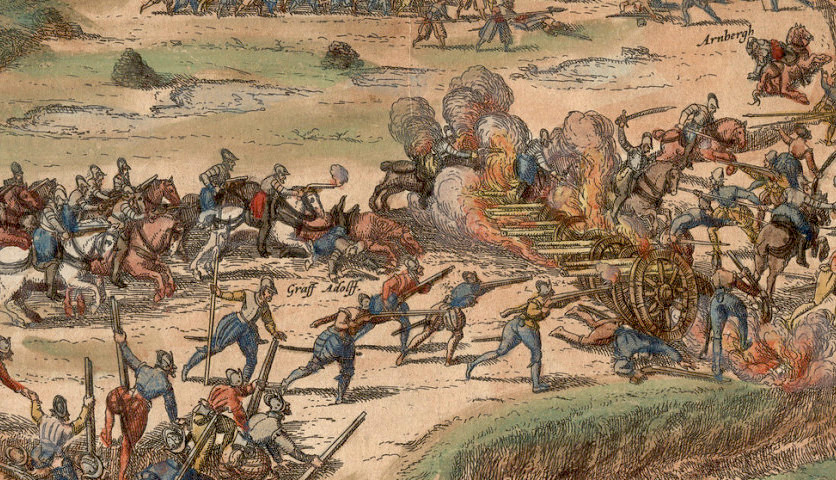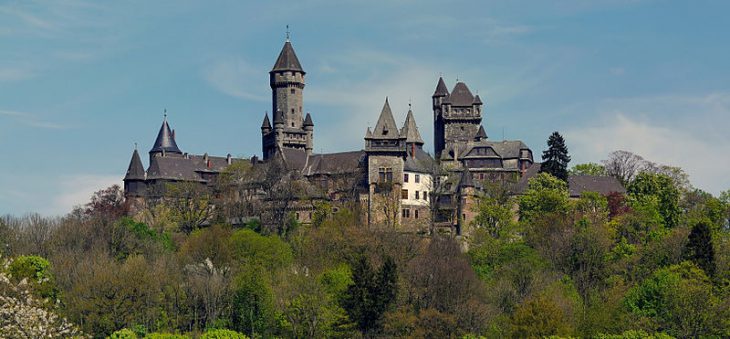The case of the missing count
Historian and coworker of the University Museum Lammert Doedens has been searching for years now, to find the grave of the los count Adolf of Nassau. This brother of William of Orange lost his life during the Battle of Heiligerlee, but nobody knows where his body wound up.
Research led him to Oldenburg. In the crypt of the Counts of Oldenburg the remains were found of two bodies that were no mentioned in the church archives.
Doedens succeeded in getting a grant for a DNA profiling from the University of Göttingen. Two unknown men in the grave that had been twenty of thirty years old when they passed, turned out not to be related to the counts of Oldenburg. A complementing strontium isotope analyses proved that this man had not lived in the surroundings of Oldenburg.
Comparison of the Oldenburg DNA with that of a female relative of Adolf of Nassau could finally settle the question: is the unknown man in the crypt indeed the lost count Adolf.
It was supposed to be a decisive step in what has become an eight-year quest. Lammert Doedens was hoping to finally acquire the DNA that could prove the bone fragments that surfaced in Oldenburg in 2016 were indeed those of Adolf of Nassau, the lost brother of William of Orange.
To get his hands on the evidence he needed, Doedens convinced Count Von Oppersdorff zu Solms-Braunfels to open his family crypt in the church of Castle Braunfels. Adolf’s sister Elisabeth was buried there in 1603. ‘It hadn’t been opened in two hundred years’, Doedens says.
Doedens met the Count when he was investigating bone fragments in Oldenburg. ‘He told me that if I couldn’t get any further, I could contact him’, he says. ‘So that’s what I did, just before summer.’
Private property
The count didn’t hesitate. ‘He said: “I promised. So you can come.”’, Doedens remembers. A big advantage was the fact that the both church and the bones buried there are private property. So the only permission Doedens needed to open the coffins could come from the count himself.
Doedens recalls his arrival in Braunfels last Sunday evening. ‘It’s amazing there’, he says. ‘It’s a castle right out of a fairy tale. Harry Potter might live there.’
Doedens knew there would be a lot of heavy lifting, breaking open coffins and dragging them about, so he brought his colleague, Krajenbrink, to help. University of Göttingen DNA expert Birgit Grosskopf was on standby to step in as soon as the two hit pay dirt.
‘Just imagine: we were entering this ancient church. A wooden wall hid iron doors that opened with a protesting squeak. We saw a staircase leading down into the dark and far, far away: a tiny window. Then… the Gruft’, Doedens says.
Into the deep
Two coffins were visible in the dim light. Below, deeper down, there were more. Throughout, Doedens and his companions discovered wooden walkways in various stages of decay. But which one was Elisabeth’s coffin? Was she even there at all? Of the sixteen coffins they expected to find, they counted only thirteen.
Based on information he had gleaned from old archives, she should have been there. ‘Elisabeth was supposed to be buried below the epitaph of the church’, he says. They even lowered cameras into the deep darkness – to no avail. ‘It was exactly the part of the crypt we couldn’t reach.’
Blueprints revealed that the crypt might have two or three more parts, but they were impossible to reach.
The mission seemed doomed until Doedens found a small opening in the outer wall of the castle. Nobody knew what was behind it, not even the count himself. ‘But if you can just visualize… it just might be possible that the niche offers a way into the other part of the crypt.’
Promise
The two departed with promises from the Count that he would find out what is behind the niche. ‘Just imagine him emailing me today or tomorrow that there is a way in after all’, Doedens says hopefully.
But even if that doesn’t happen, his mission is far from over. William of Orange had more sisters. There’s Magdalena, for starters, buried in Weigersheim. ‘And Juliana, who has been laid to rest in the crypt of the Fürst von Schwarzburg-Rudolstadt.’
First, he’ll search for Juliana. A professor from Erfurt is renovating her grave right at this moment. And if that search fails? Doedens has more plans. ’ But I can’t say anything about that.’
Castle Braunfels





